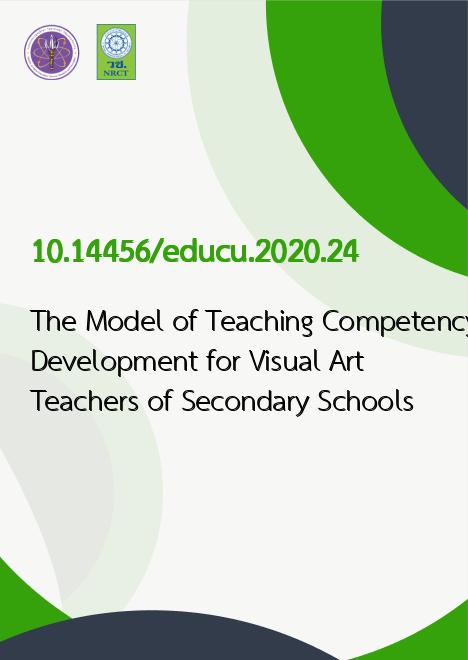
|
The Model of Teaching Competency Development for Visual Art Teachers of Secondary Schools |
|---|---|
| รหัสดีโอไอ | |
| Creator | Nuttida Pujeeb |
| Title | The Model of Teaching Competency Development for Visual Art Teachers of Secondary Schools |
| Contributor | Poonarat Pichayapaiboon, Ekachai Keesookpun |
| Publisher | Centre for Education Innovation, Print and Online Media |
| Publication Year | 2563 |
| Journal Title | Journal of Education Studies, Chulalongkorn University |
| Journal Vol. | 48 |
| Journal No. | 3 |
| Page no. | 106-124 |
| Keyword | model of teaching competency development, visual art teachers, teaching competency, secondary schools |
| URL Website | https://so02.tci-thaijo.org/index.php/EDUCU |
| Website title | Journal of Education Studies, Chulalongkorn University |
| ISSN | 2651-2017 (Online) |
| Abstract | The purpose of this research were to (1) analyze a the current and desirable states of developing teaching competency for visual art teachers of secondary schools, and (2) enhance the model of teaching competency development for visual art teachers of secondary schools. Using 400 schools of the office of Secondary Education Service Area as a sample group, with visual art teachers as a key informant. The research instruments were questionnaire and interview. The data were analyzed by frequency, percentage, average, standard deviation, and index PNIModified. The research result indicates that 1) Knowledge management has the most level of priority need, following by training, coaching and mentoring system. The first competency to develop was skills and professional development and lifelong learning. The most effective ways to enhance knowledge and skill dimension were training, coaching, and knowledge management. Knowledge management was the best way to enhance the characteristics. While ethical standards and values were promoted by knowledge management combine with mentoring system. And the dimension of professional development and lifelong learning were promoted by knowledge management, mentoring system, and training all. 2) The development method comprised of seven important components. Model’s core elements consisted of 4 different elements which were Coaching, Mentoring, Training, and Knowledge Management. These 4 core elements were meant to develop 5 main competencies consisted of Professional Knowledge, Skills, Characteristic, Ethical Standards and Values, and Development and Lifelong Learning |